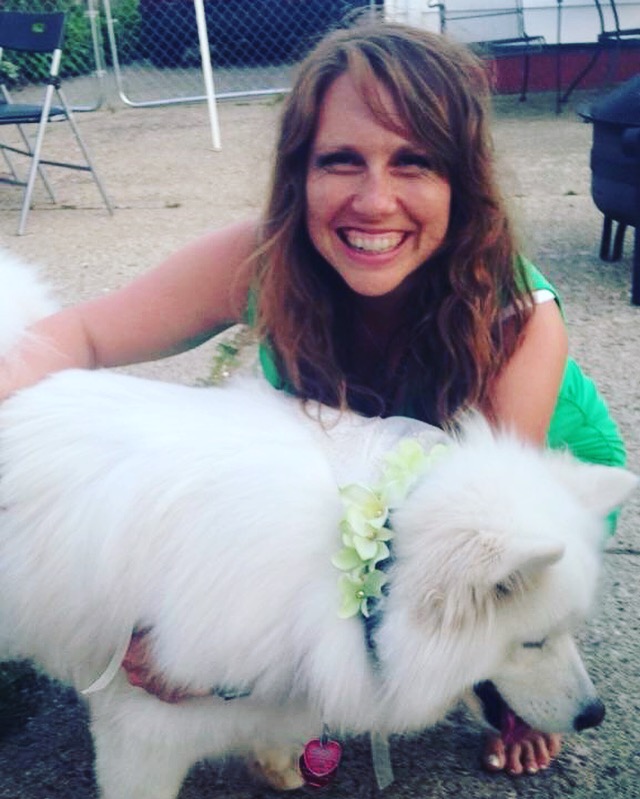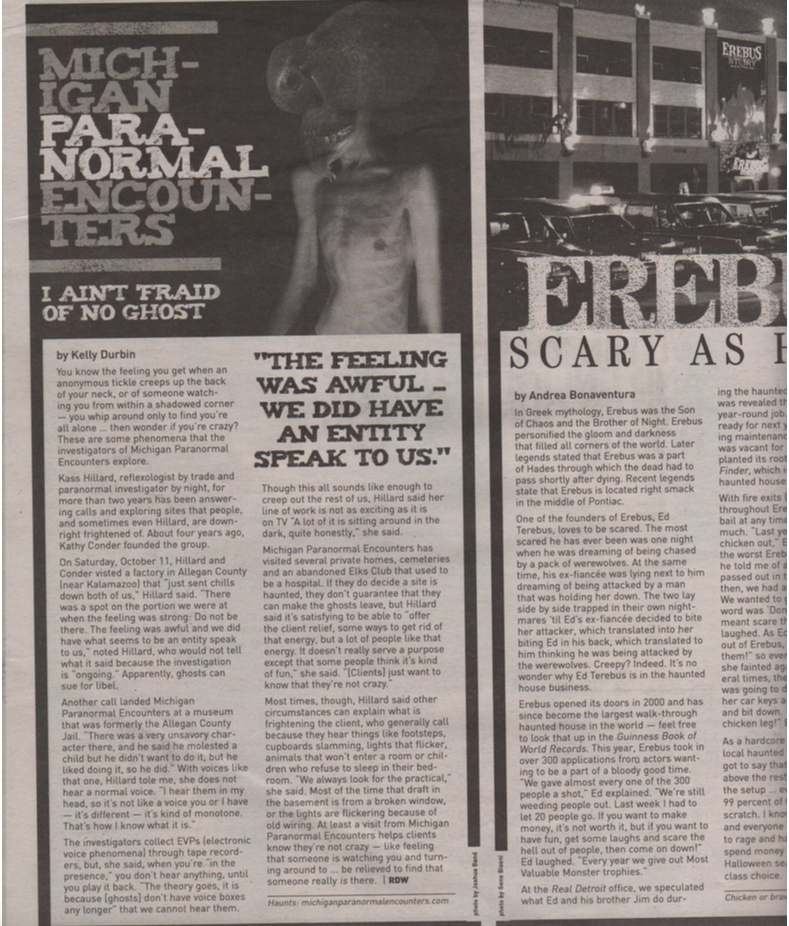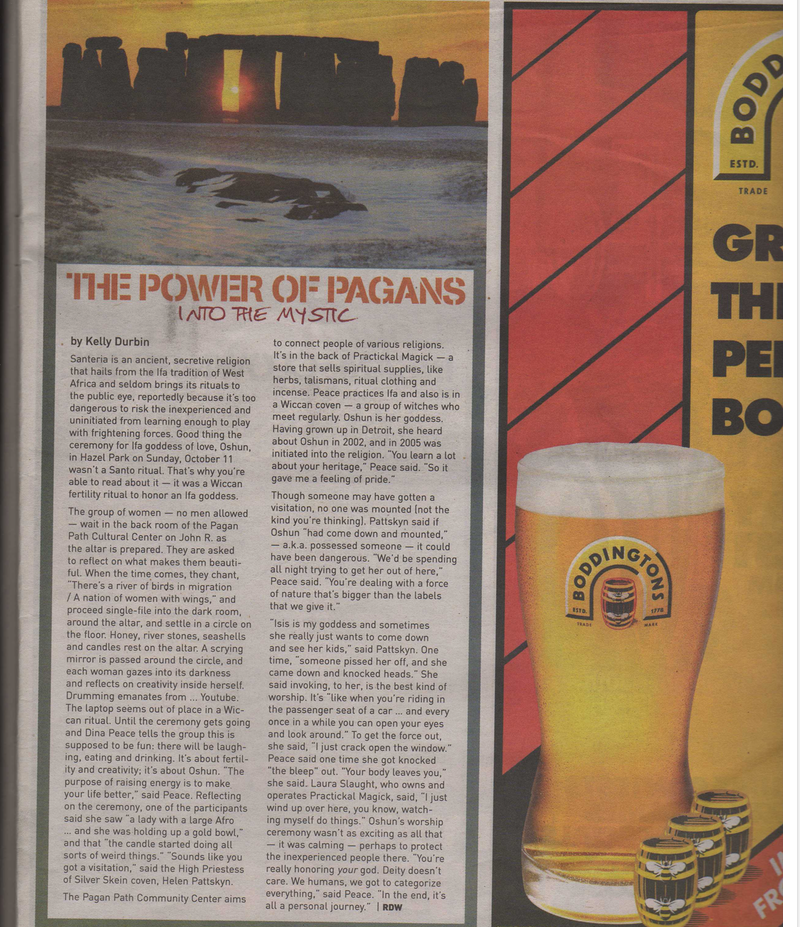This essay was originally published in Prometheus Dreaming in 2020. The below, edited version was published in the Bear River Review in 2021.
Her left paw, then right paw, rear-paw rear-paw, trotted out onto the crunchy snow in the vast, sagebrushed valley of the wild country, her nose a magnet to the ground to track elk and bison. She—the bulky alpha wolf of the Lamar Canyon Pack of Yellowstone—was unaware of the invisible realm that was supposed to protect her from the ear-piercing thunder, or the smooth stone that would sail into her body to stain her soft white fur red. The GPS collar, wrapped around her neck to send signals to the scientists who studied her every move, did not stop the man from shooting her. In April 2017, the most stunning wolf in Yellowstone, known as O-Six, mother who whelped 20 pups, was illegally shot dead within earshot of the protected park.
That same month, U.S. legislation stripped protections from wolves, bears and other predators in national wildlife refuges in Alaska. Wolves and their pups could now be killed in their dens; bears gunned-down at bait stations.
The Circuit Court of Appeals in Washington, D.C., granted Wyoming the authority to kill wolves, who are just barely repopulating piddly portions of North America, on sight.
~
“Wild Life and Wild Woman are both endangered species,” writes Clarissa Pinkola Estés in Women Who Run with the Wolves: Myths and Stories of the Wild Woman Archetype in 1992. “Over time, we have seen the feminine instinctive nature looted, driven back, and over built. For long periods it has been mismanaged like the wildlife and the wildlands. For several thousand years, as soon and as often as we turn our backs, it is relegated to the poorest land in the psyche. The spiritual lands of the Wild Woman have, throughout history, been plundered or burnt, dens bulldozed, and natural cycles forced into unnatural rhythms to please others. It’s not by accident that the pristine wilderness of our planet disappears as our own inner wild natures fades.”
~
Have you ever wondered why horses and cattle were domesticated, but not deer? Our earth boasts thousands of domesticable species, but only dozens have been. We’re not just talking “tame”; in order to be considered “fully” domesticated, the species must become genetically and behaviorally distinct from its wild ancestors—often after hundreds or thousands of years of selective breeding.
Question: Why domesticate at all?
Answer: To secure a more predictable supply of resources.
Charles Darwin was the first to make a distinction between conscious selective breeding, or direct selection of desirable traits, and unconscious selection, in which traits evolve as a byproduct of natural selection.
Deer were never the ideal candidate for domestication. They darted around, jumping fences and flashing their white tails. They had beady eyes on the side of their head, and couldn’t look people in the eye when they were talking to them. If someone had cared enough about these panicky protein sources and persisted long enough with unnatural selection, those traits could have been bred out. Why bother, though, when there were meaty, conquerable cows and majestic, shiny-coated horses whose gaze pierced the very soul?
As with many human behaviors, it comes down to economics. As one Reddit commentator put it, “Once some culture makes the long effort to domesticate a species, it’s easy to just spread it everywhere, rather than to start from scratch again with a new species.”
Reindeer were tamed in Siberia, though not “spread everywhere,” by the Indigenous communities known as the Samoyedic people.
To assist with the herding of reindeer and other duties such as hunting polar bear, watching over children, snuggling in beds with families for added warmth, and providing soft fur that could be brushed-out to weave into scarves, the Samoyedic people also domesticated the most ancient dog breed, the Spitz, into the Samoyed.
After Russia’s two-centuries-long process of conquering Siberia that culminated in the 1900s with the Soviets’ forced removal of the Indigenous communities, native speakers of Russian, rather than Samoyedic languages, dominate Siberia today.
~
“My” Samoyed dog’s name is Noël. I put “my” in quotes because I don’t believe she is “mine.” Jerry Seinfeld said, “Dogs are the leaders of the planet. If you see two life forms, one of them’s making a poop, the other one’s carrying it for him, who would you assume is in charge?”
~
Over the first several months of her life, at Fido Personal Dog Training in Ferndale, Michigan, we took Puppy I, Puppy II, Intermediate, and Advanced classes in positive-reinforcement, clicker-based methods to perform “sit,” “down,” “stay,” “come here,” and to walk with a loose leash through a park while I balanced an egg on a spoon. Finally, Noël learned how to read. If I hold up the blue-and-purple canvas that I painted the word “sit” on, she sits; “down,” and she lowers into a sphinx pose.
Later, we dabbled in agility training so she could enjoy running through tubes and climbing ramps. However, we stopped after a trainer squeezed her muzzle to stop her barking.
Some people give dogs “commands”; positive reinforcers say “cue.”
Some people still punish dogs physically, as if living out the opening scenes of Call of the Wild.
In positive reinforcement, you reward behavior you like, ignore behavior that you don’t, and you remove treats, toys and attention as “punishment” rather than whacking your “best friend” with a newspaper or worse. When Noël was teething, I didn’t tell her to stop chewing; I gave her an antler or a “bully stick” (aka bull penis—grass fed, of course) to chew on to redirect the natural behavior while saying the cue, “chew toy.” When she started digging in my flower bed, I was to channel this ancient habit to a designated digging pit instead, which I thought of as her Virginia Woolfian “Room of One’s Own.”
I call her “little girl,” which a woman on a porch once overheard and said, “She ain’t little.” I sing to her, and spoon with her, she attends daycare, and there is an oil painting of her hanging in the family room. She holds my hand when I cry, and when she sits in the passenger seat of my car. I would say she is domesticated.
~
Reality came to call on the fourth of July, 2016 in the backyard of my under-1,000-square-foot white bungalow circa 1922.
There was a mysterious patch of yellow hay in lieu of grass that I had noticed but neglected to look into. I let Noël out, then I heard high-pitched squealing. MEEE MEEEE MEEEEEE.
Warning: What you are about to read is what happens when pets stop being polite, and start being real. Please skip to the next section if your dog has never, say, swung a dismantled possum by the tail in front of your face, like my coworker said his beagle did to his wife.
I learned from a pest-control professional the day after the carnage that the yellow grass had been a bunny’s nest, or whatever rabbits’ living spaces are called. And the dozen-ish squealing, pink shapes with gaping mouths but no fur were baby rabbits, perhaps waiting for their mother to return with food. Didn’t this mother instinctively know that an Arctic dog bred to kill polar bears lived here? During this mass killing spree, all I did was scream from the sideline that was my driveway: “Stop! Drop it! Come here!” I couldn’t bring myself to step onto the grass to save the babies she was pulling from the ground with her muzzle and slurping up. I was frozen, horrified.
My neighbor, braver, older and wiser than I through years of independence in her own home killing and disposing of her own rats, took pity as I wailed, NOOO. NOOOO! NOOOOOO! (I might have been kneeling on the ground.) Lisa slid those pitiful lifeforms not gulped into Noël’s cavernous belly from the blades of grass, onto a shovel and into an orange Home Depot bucket/grave, sealed with a plastic lid until garbage day.
She didn’t get them all, though. When I started cutting the grass I again heard MEEE MEEEE MEEEEEE emanating from the grass next to my foot, over the buzz of the lawnmower. I wanted to be at my cousin’s pool for a Fourth of July barbeque, yet here I was, tiptoeing around animal fetuses with a wild animal/traitor staring out from the picture window. Two girls in the yard behind mine were sunbathing in a kiddie pool enjoying a cold one while I muttered, “must be nice.”
I didn’t let her on the bed for (a couple of) days. I couldn’t bring myself to sleep next to such a murderer. Much like Simba when he realized Scar killed Mufasa—“murderer,” he growled—I grumbled “murderer” when she opened the bathroom door with her muzzle and tried to lay at my feet as I peed.
On the third of July, we stayed up late to watch a National Geographic documentary about wolves. Sitting attentively in front of the lifesize TV, tail wagging, Noël witnessed a pack of wolves tear an elk to shreds, their muzzles stained blood red. I thought about turning it off because it was a bad influence.
~
Cesar Millan’s tactics are disdained in the professional dog-training community, which is constantly swatting at his made-for-TV approach with science. He treats dogs like they are wolves, and educates people to not let their housepets become the “alpha.” According to Dog Whisperer university, dogs are constantly trying to dominate us and if we’re not good “pack leaders” we will have to resort to dangerous behavior such as chasing them into corners, or tackling them with a swift “alpha roll.” (Just no.)
Positive-reinforcement pioneer and veterinarian Ian Dunbar says in his TED Talk, “Dog Friendly Dog Training,” that this “dominance” school of thought is a “Mickey Mouse interpretation of what is a complex social hierarchy.” He says, “So often, people train dogs by making up human rules as they go, then punishing the dog for a rule they didn’t even know existed. It’s really very scary the abuse that dogs get,” Dunbar said.
“Dogs, horses, and humans—these are the three species which are so abused in life and the reason is built into their behavior is to always come back and apologize. ‘I’m sorry you had to beat me, I’m really sorry, this is my fault.’ They are just so beatable. And that’s why they get beaten.”
~
Nate Blakeslee writes in the 2017 bestseller American Wolf: A True Story of Survival and Obsession in the West that, once shepherding became a dominant human behavior, wolves came to embody wickedness: think fairy tales and werewolf stories. In the Bible, Jesus is known as the good shepherd and the lamb of God: guess who is the devil?
Once the devil himself was brought back to life in the Northern Rockies, the U.S. Fish and Wildlife Service received a “steady stream of complaints from ranchers, especially as wolves expanded their territory even further,” according to Blakeslee. Local ranchers now had to deal with a force their ancestors had relinquished long ago.
~
Here are some facts about wolves and women.
While wolf populations were repopulating Yellowstone, parts of Michigan’s Upper Peninsula and Minnesota, and other such places they used to roam before early-1900s mass-killings by humans, #metoo started holding some men accountable for predatory behavior against women.
In a 2017 effort to protect rape perpetrators from their victims, Betsey “if everything is harassment, nothing is” DeVos raised the standard of proof from “preponderance of the evidence” back to the harder-to-prove “beyond a reasonable doubt.” She also restored the rights of those accused of rape on college campuses to cross-examine their accusers—a practice known to scare rape victims from coming forward.
The man who killed the matriarch wolf of Yellowstone, O-Six, was similarly protected. Authorities allowed him to conceal his identity from the public, lest wolf advocates hunt him.
~
There are more types of wolves than you can shake a stick at: the big bad wolf, mother wolf, lone wolf, she-wolf, bad-ass wolf donned on bikers’ leather jackets. But the wolf type I specifically requested for my 29th birthday was either the ironic, badass wolf surrounded by lightning and imminent darkness on a T-shirt, or the howling wolf in smoky white on the back of a black wolf-fur-esque fleece, preferably bought “Up North” in Michigan.
I was basking in the spring sun in my backyard with Eric, my future husband who I’d been dating a mere two weeks (and who was the first to point out the silliness of my choice of “ë” rather than “e” for spelling Noël’s name), enjoying our pre-meeting of the family status when the creak of the metal gate alerted me that my mother, sisters and brother-in-law had arrived an hour and a half early.
My friend and dating-realm guide, Nikki, had previously given me sage advice to the effect of, Don’t tell him about your mystical wolf obsession yet. Let him get to know and love the Kelly we know and love first. Then, you can talk all you want about wolves.
However, my mother gave me life and she can take it away, I thought. When I opened my birthday present, out came a powder-blue fleece with a mother wolf cleaning her pup’s fur with her tongue, with a yellow star sewn on. This was not the correct wolf type. Nor was I prepared to say that I liked it for my mother’s sake in front of Eric.
Eric said he had to go.
On the screened-in front porch, my sister scolded: “Mom was really excited to give you that mystical wolf,” which I hoped Eric did not overhear from his car.
~
Some people, myself included, think animals come into our lives at arranged times to give guidance, to teach about some skill that we need to engage with to survive our current situation.
For a while I would have dreams of, say, a fox, wolf, lion or polar bear then look up what these astral encounters could mean.
“Wolf dreams can have a positive or negative connotation and, like all animal dreams, they can represent animal or primal instincts,” The Huffington Post assured me one night when I Googled “wolf dream” in bed, blue phone-screen illuminating my curious face. “Wolves are seen as majestic, beautiful and as a source of sacred wisdom. They are also seen as sly, insatiable and evil.”
~
Women, too, are placed into various archetypes. The prostitute, the girl next door, the devoted mother, the princess, the shrew, the hag, even the Playboy Bunny.
Women have to embrace the dirty, the wet, and the moist as they dig past their assigned archetypes to reclaim their whole self. “Now, understand me. Women have died a thousand deaths before they’re twenty years old,” Pinkola Estés writes. “They have gone in this direction and been cut off, and they’ve gone in that direction and been cut off, and they’ve had this hope which has been cut off and they’ve had that dream which has been cut off.” In their 30s and 40s, Pinkola Estés writes, women face a fork in the road: to turn toward bitterness, or toward the instinctual nature. If you choose the instinctual psyche, you are reborn.
“There’s a lot to be said of pinning things to the earth, so they don’t follow us around. What it really means is laying your rage to rest so that you can create the Wild Woman.”
~
When I was a kid, family legend has it that I would play in the sandbox in white leggings (which in the early ‘90s were referred to as “stretch pants”), white socks, white shoes, and a white windbreaker with a teddy bear sewn on the right pocket. Due to my signature combination of OCD and perfectionism, I miraculously emerged unscathed by sand or mud and sat down clean at the dinner table.
A single woman in my late 20s when I bought my first house, the bespoke white bungalow, I took up gardening. Crowds of yucca spikes filled-in my back and front yard, along with mystery vines, mint, blueberry, and a preponderance of unknown breeds: wild or domesticated, I knew not. (Never buy a house in the winter in Michigan. Or at least dig through the three feet of snow to see if there actually is a lawn.)
“Dirt may be the new Prozac,” I learned via an Outside Magazine article on 14 habits to cultivate happiness which ranked digging in the dirt as number 2. “Working in soil raises your spirits, in part because you pick up cheerful germs while digging.” Pets made number 14: “Pet owners have greater self-esteem and tend to be less fearful.”
While I was digging up yuccas at sunset, Noël pummeled her snowshoe-shaped paws into the earth at my side. Confused as to why this was taking so long, finally I dug up some bricks—roughly three per yucca—from two feet under. The elderly woman who inhabited the house before it was condemned then flipped not only walked her cat in a stroller, but she also planted bricks, around which the yucca roots tangled, chaining them to the earth. Her motive, I would not learn. And yet I persisted in digging up the bricks one by one, and planted purple, yellow, and pink dahlias in their place.
Later, for the finishing touch I placed into the flower bed a smooth, stone statue of a bunny, which I had put on our wedding registry as an inside joke with myself.




